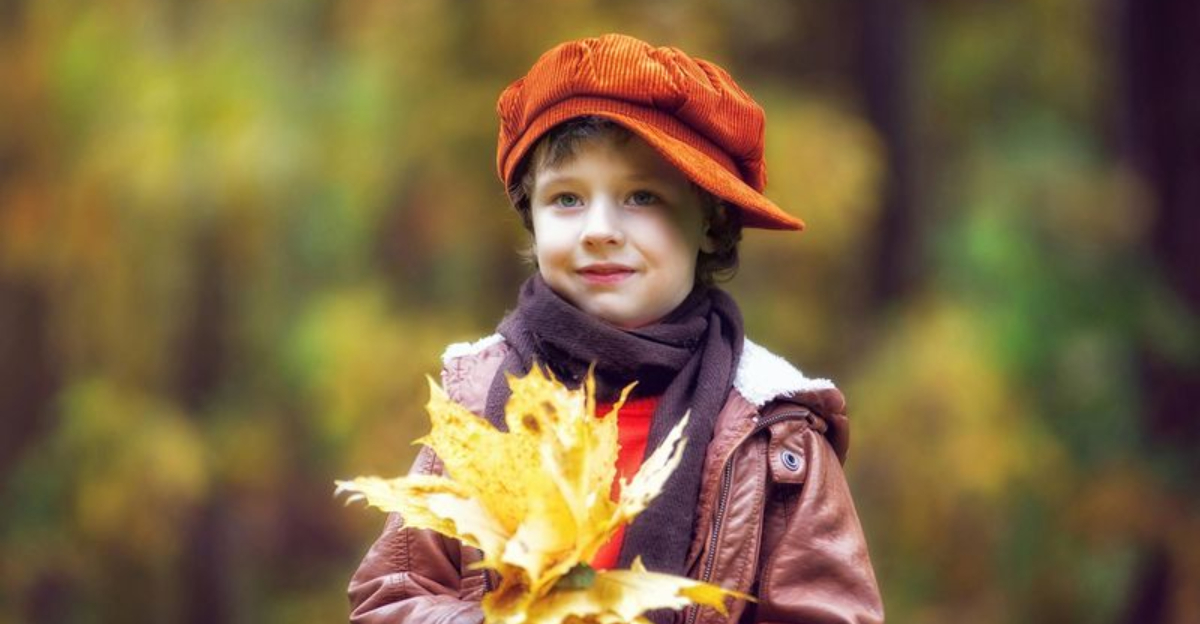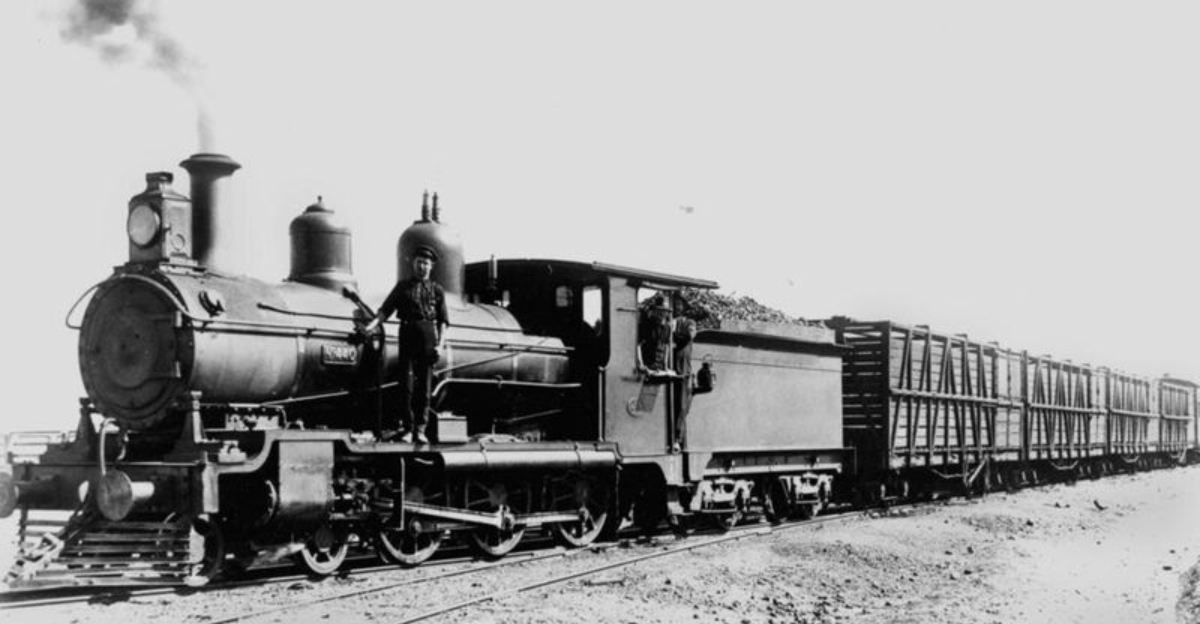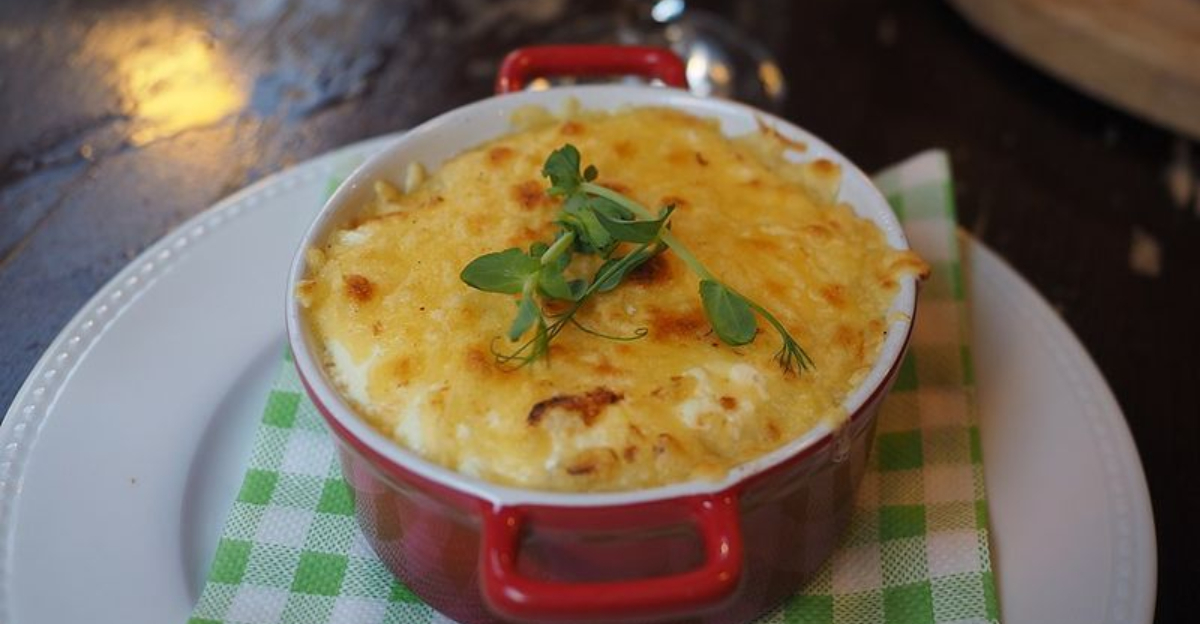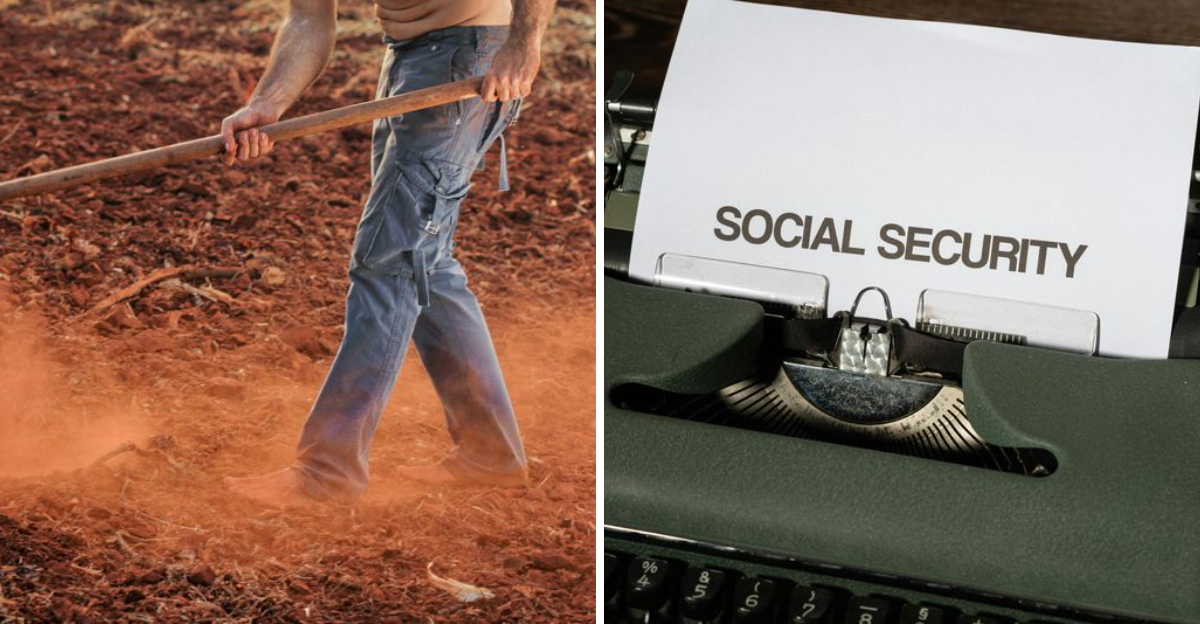16 Parenting Norms From The 1960s That Have Evolved
Seat belts dangled unused, kids rode bikes until dark, and sunscreen was something you wore by accident.
Parenting in the 1960s came with love, common sense, and a dash of danger, guided by instincts more than manuals.
What felt normal then – like sharing soda bottles or playing unsupervised for hours – would have today’s parents clutching pearls. It was freer, looser, sometimes riskier, but full of grit and warmth. Let’s peek back at how families once raised kids in a world without helmets, hashtags, or helicopter parents.
The historical practices and parenting norms described in this article reflect beliefs and standards common during the 1960s. Modern medical, scientific, and safety research has since disproven or updated many of these ideas.
Readers should always follow current child-safety, health, and parenting guidelines as recommended by qualified professionals and recognized health authorities.
1. Babies Put To Sleep On Their Stomachs

Doctors once told parents that stomach sleeping prevented choking, so cribs everywhere featured babies snoozing face-down. Research later revealed this position dramatically increased SIDS risks.
Today, the “Back to Sleep” campaign has saved countless lives. Babies now sleep on their backs, and parents know this simple switch makes nighttime much safer for tiny sleepers everywhere.
2. Smoking Around Children In Homes And Cars Was Common
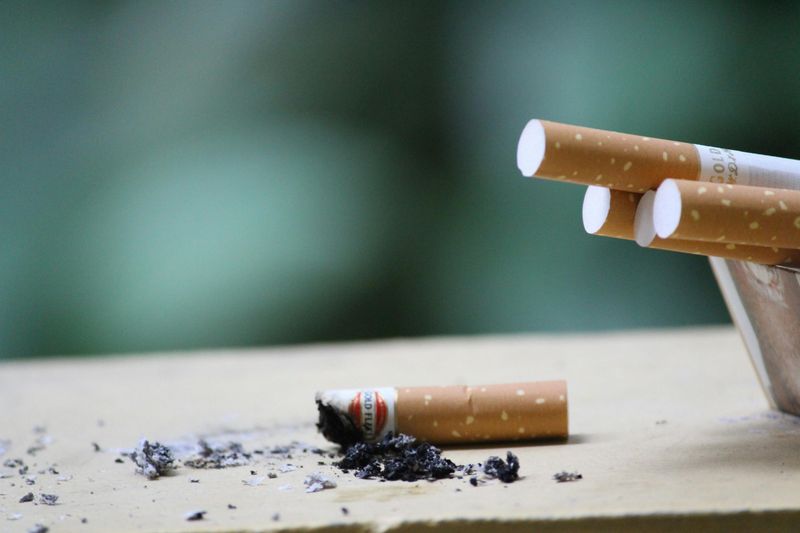
Lighting up indoors or during family road trips barely registered as a concern back then. Ashtrays sat on kitchen tables, and car windows stayed cracked while smoke swirled around kids in the backseat.
Science eventually exposed secondhand smoke’s dangers, leading to smoke-free homes and vehicles. Now, most parents avoid smoking anywhere near children today, understanding how harmful those invisible toxins truly are.
3. Kids Often Rode Without Proper Car Seats Or Restraints

Seat belts for kids? Not a priority. Children bounced freely in backseats, sometimes even standing up while cars zoomed down highways. Crashes resulted in horrifying injuries that could’ve been prevented.
Modern car seat laws now require age-appropriate restraints, dramatically reducing child fatalities. From rear-facing infant seats to booster chairs, today’s safety standards keep little passengers secure during every journey.
4. Small Children Riding Up Front With Airbag Risks Unknown
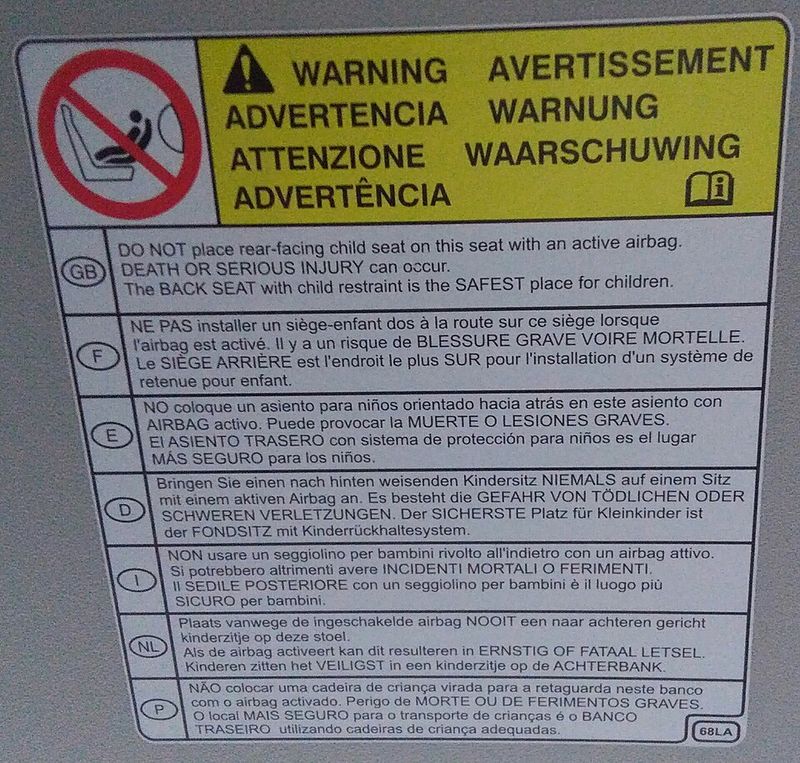
Before airbags became standard, kids routinely claimed the front seat as their throne. Nobody realized that deploying airbags could seriously harm small bodies positioned too close to the dashboard.
Research changed everything. Parents learned that backseat placement keeps children safest, especially those under 13. That coveted front-row spot now waits until kids reach the proper age and size requirements.
5. Free-Range Play On Hard Metal Playground Equipment

Playgrounds featured towering metal slides that scorched skin in summer and slippery monkey bars over concrete. Falls meant serious scrapes, broken bones, or worse, yet kids climbed fearlessly every recess.
Modern playgrounds prioritize safety with rubberized surfaces, lower heights, and rounded edges. Though some argue kids need risk, today’s equipment balances adventure with injury prevention, keeping emergency room visits down considerably.
6. Hitchhiking Seen As Relatively Normal For Teens And Young Adults
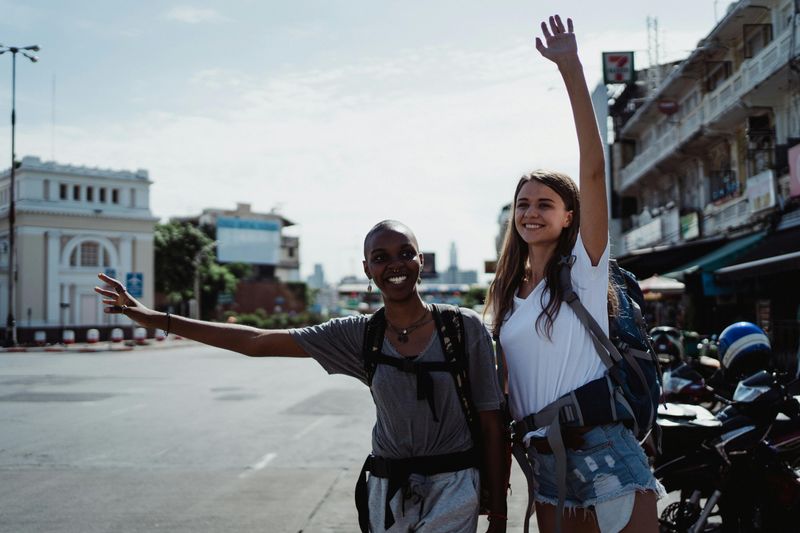
Sticking your thumb out for a ride was just another way to travel. Teens hopped into strangers’ cars without much worry, trusting that most drivers meant well and offered harmless transportation.
Crime awareness shifted perspectives dramatically. Parents now recognize the serious dangers lurking in accepting rides from unknown people. Rideshare apps provide safer alternatives, letting families track trips and verify driver identities instantly.
7. Lead Paint And Other Leaded Products Were Widespread

Bright, cheerful lead paint covered nursery walls while leaded gasoline filled family cars. Nobody connected these products to developmental delays, learning disabilities, or behavioral problems affecting children exposed to toxic particles.
Federal bans eventually eliminated lead from paint and fuel. Today, parents test older homes carefully and address contamination immediately, understanding that even tiny amounts can damage growing brains permanently.
8. Bicycle Helmets Were Rare For Kids

Kids pedaled everywhere with wind whipping through their hair and zero head protection. Helmets seemed unnecessary or even uncool, reserved only for professional racers or extreme athletes attempting dangerous stunts.
Brain injury research transformed cycling culture completely. Helmets became mandatory in many areas, and parents now refuse to let kids ride without proper headgear. That simple foam shell prevents devastating trauma during inevitable tumbles.
9. Infant Formula Heavily Promoted Over Breastfeeding

Formula companies convinced mothers that bottles offered superior nutrition and modern convenience. Breastfeeding seemed old-fashioned, and many hospitals often discouraged it, pushing formula samples instead right after delivery.
Science eventually revealed breast milk’s incredible benefits for immunity, bonding, and development. While formula remains valuable when needed, health organizations now strongly encourage breastfeeding, providing support and education to new mothers everywhere.
10. Breastfeeding In Public Was Less Accepted
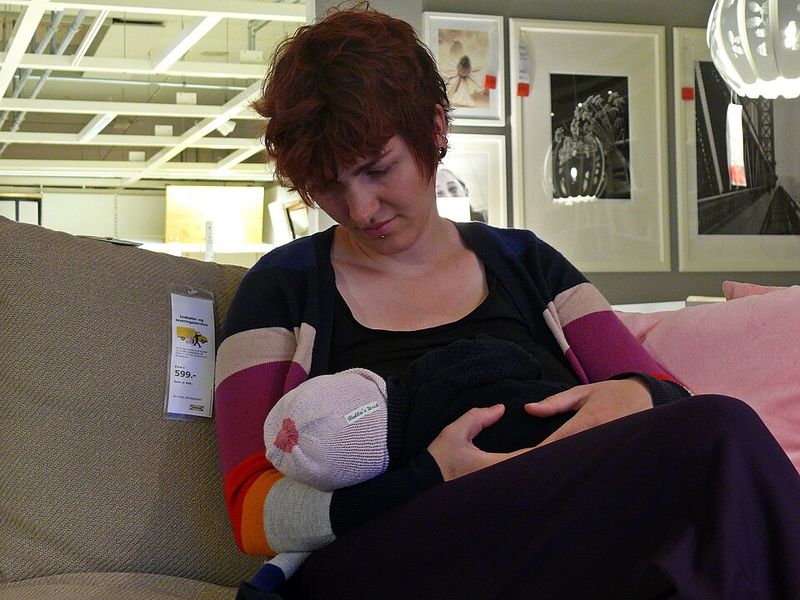
Nursing mothers faced judgment and demands to hide away in bathrooms or cars. Society treated breastfeeding as something shameful rather than natural, forcing women to choose between feeding babies and public outings.
Attitudes have shifted significantly. Laws now protect public breastfeeding rights in most places, and many people recognize it as normal baby care. Though some discomfort lingers, mothers increasingly feed confidently wherever babies get hungry.
11. Kids Drinking From The Garden Hose Was Routine
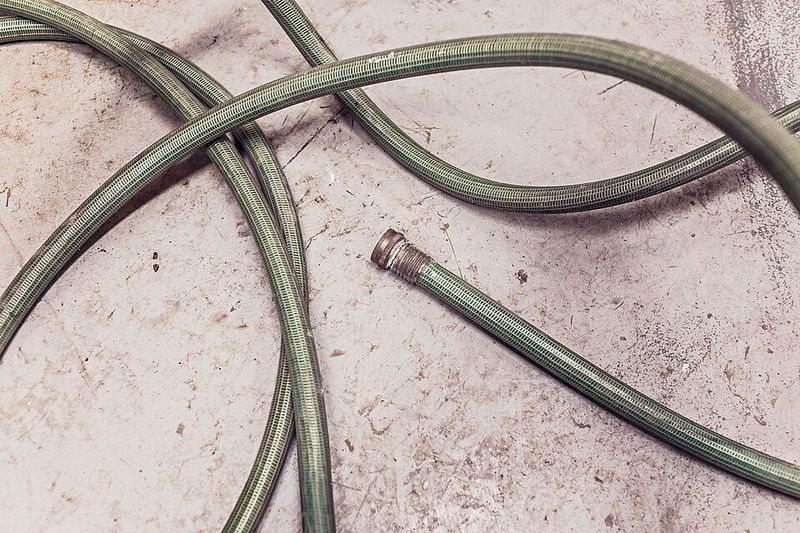
Thirsty kids simply grabbed the nearest hose and gulped away without worry. That rubber-flavored water tasted like summer freedom, even though hoses contained lead, bacteria, and chemicals that nobody considered dangerous back then.
Awareness about contamination changed hydration habits. Parents now provide clean water bottles instead, knowing that hose water can harbor harmful substances. That nostalgic sip isn’t worth the potential health risks lurking inside.
12. Liberal Household Insecticide Use Like DDT
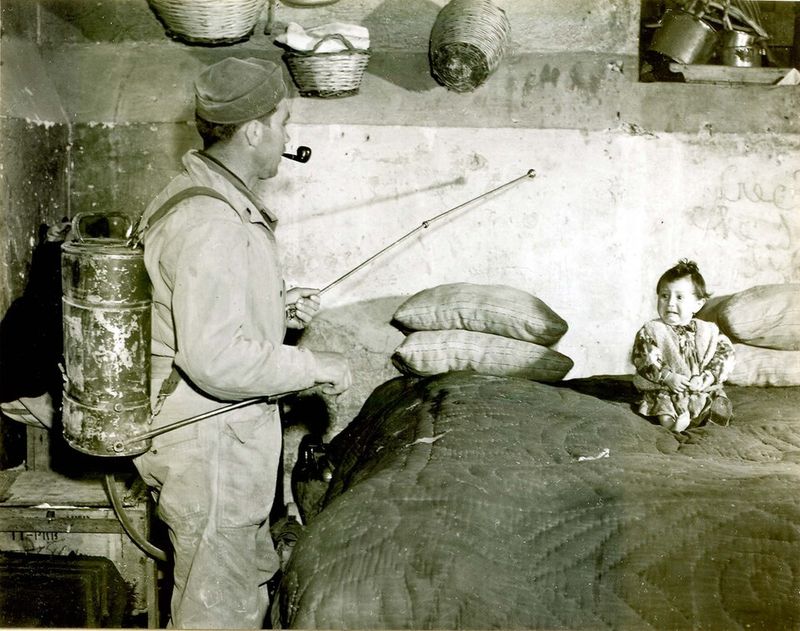
Families often sprayed DDT around homes, yards, and even directly on kids to kill mosquitoes and other pests. Chemical clouds hung in summer air while children played nearby, breathing in toxins nobody understood yet.
Environmental research exposed DDT’s devastating effects on wildlife and human health. Bans followed swiftly, and today’s pest control emphasizes safer alternatives. Parents now research ingredients carefully before spraying anything near their families.
13. Children Commonly Walked To School On Their Own
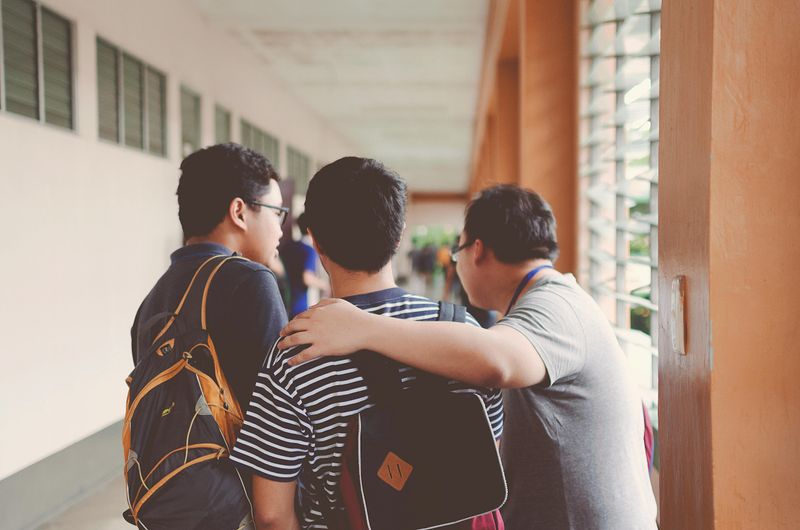
Elementary students routinely walked miles to school without adult supervision. Neighborhoods felt safer, and parents trusted that communities watched out for wandering kids heading to class each morning.
Increased traffic, stranger danger awareness, and busier schedules changed everything. Most children now arrive by car or bus, though some communities encourage walking groups with adult supervision. That independence seems riskier in today’s faster-paced world.
14. Baby Walkers Widely Used
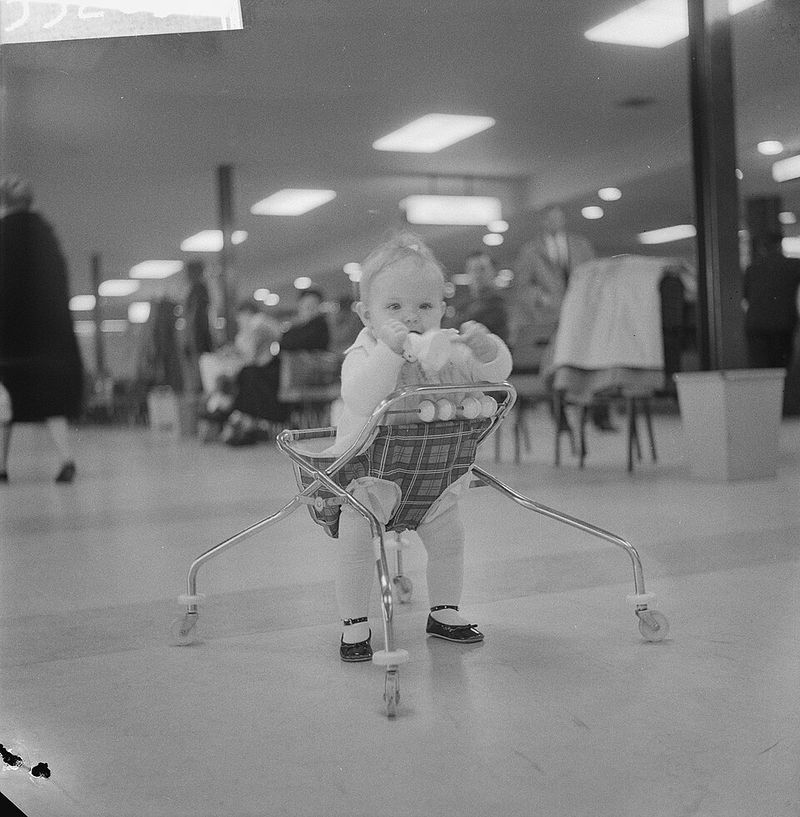
These wheeled contraptions seemed perfect for helping babies learn to walk while keeping them entertained. Parents loved the break while infants zoomed around, crashing into furniture and occasionally tumbling down stairs catastrophically.
Studies revealed walkers actually delayed walking skills and caused thousands of injuries annually. Many countries banned them entirely, and pediatricians now discourage their use. Stationary activity centers provide safer alternatives for curious babies wanting to explore.
15. Riding In Rear-Facing Third-Row Station Wagon Seats

Station wagons featured backward-facing seats where kids waved at following drivers. These spots offered zero crash protection, turning children into vulnerable projectiles during rear-end collisions that nobody anticipated properly.
Safety testing eliminated these death traps from modern vehicles. Today’s third rows face forward with proper restraints and crumple zones. That nostalgic seat may spark memories, but parents now understand its terrifying risks during accidents.
16. Minimal Sunscreen Use While Tanning Oils Were Popular

Families slathered on tanning oils to accelerate bronzing, believing sun-kissed skin signaled health and beauty. Sunscreen seemed unnecessary, and sunburns were just temporary discomfort before achieving that perfect summer glow.
Skin cancer research revealed UV radiation’s deadly consequences. Dermatologists now recommend daily SPF application, especially for children’s delicate skin. That golden tan isn’t worth melanoma risks, and sun protection has become essential year-round for everyone.

